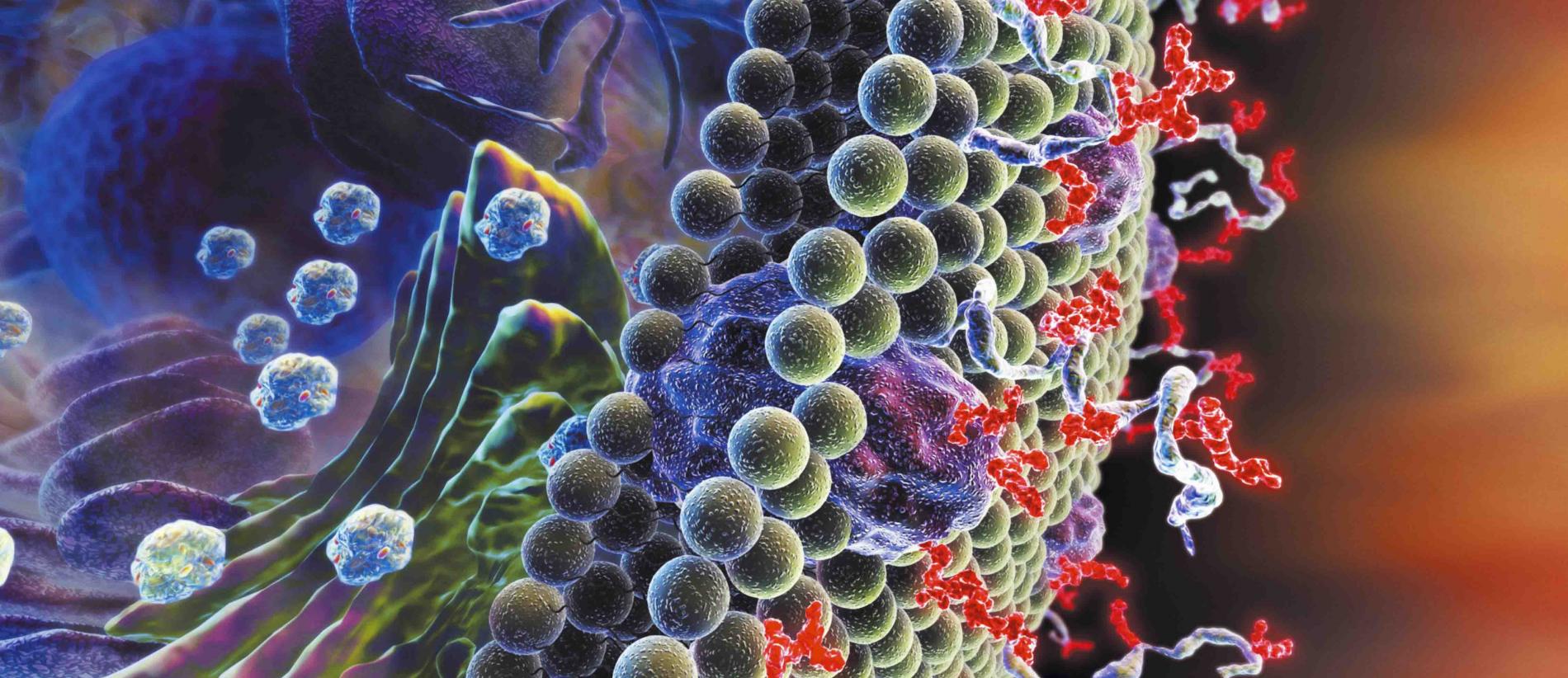Tonic repression of Collagen I by the Bradykinin receptor 2 in skin fibroblasts.
Wong HH, Seet SH, Bascom CC, Isfort RJ, Bard F


The Marseille Cancer Research Center celebrates its 50th anniversary ! -
Cell-to-cell communication plays a crucial role in the production and maintenance of complex tissue architectures. Glycoproteins, which undergo extensive modifications by complex sugars known as glycans, are key mediators of these interactions. The exact ways in which glycans modify and regulate carrier proteins are still not well understood.
The focus of the Glycosylation, Cellular Interfaces and Therapies laboratory is to unravel the significance of protein glycosylation in cancer. Specifically, we aim to investigate how glycoproteins aid cancer cells thrive within their microenvironment. Our research primarily centers on the regulation of GalNAc type O-glycosylation, with a particular emphasis on the GALA pathway. This pathway, initiated at the Golgi apparatus, governs critical glycoproteins involved in the growth of solid tumors.
Our scientific objective is to elucidate how GALA-modified proteins contribute to the remodeling of normal tissue in tumor development, evasion of the immune system, and sustained growth within a limited environment. By gaining a better understanding of these processes, we can identify novel targets for therapeutic intervention.
Our translational research focuses on a specific GALA target known as Calnexin, a protein chaperone that functions at the surface of cancer cells to degrade extracellular matrix.
 surface glycoproteins
surface glycoproteins
Exploratory work in mice models has established that the GALA pathway regulates a form of cell competition, whereas cells with high GALA are able to overcome cells with low GALA. The goal of the project is to re-constitute this competition in vitro and screen by siRNA or CRISPR for the glycoproteins that mediate this interaction.
The project involves reconstituting spheroids containing populations of cells with different levels of GALA. We will then image how these cells interact in a 3D environment and study the importance of ECM proteins in the dynamics of these spheroids.
GALA induces the glycosylation of ER resident proteins. For several ER proteins, this glycosylation also results in exit from the ER and presentation at the cell surface. We seek to understand how glycosylation can result in this redistribution of proteins
The project focuses on the role of ER protein O-glycosylation in pancreatic cancer. We use in vitro and in vivo techniques to investigate the impact of O-glycosylation on cell-ECM interactions and tumour progression. Using glycoproteomics techniques we uncover O-glycosylated proteins that can be investigated for use as biomarkers and therapeutic targets.
This project, in collaboration with Abtech Therapeutics, aims to create tools to target specific glycoproteins. We are designing bispecific antibodies binding simultaneously the peptidic and the glycan moieties.
Team publications
Wong HH, Seet SH, Bascom CC, Isfort RJ, Bard F
Daulat AM, Wagner MS, Audebert S, Kowalczewska M, Ariey-Bonnet J, Finetti P, Bertucci F, Camoin L, Borg JP
Chia J, Wang SC, Wee S, Gill DJ, Tay F, Kannan S, Verma CS, Gunaratne J, Bard FA